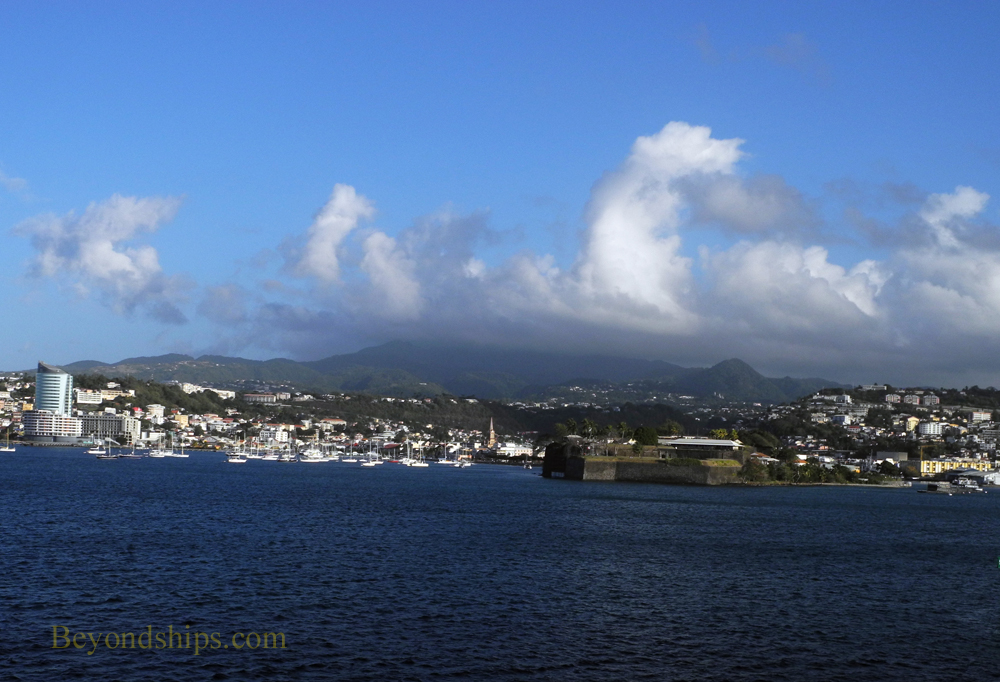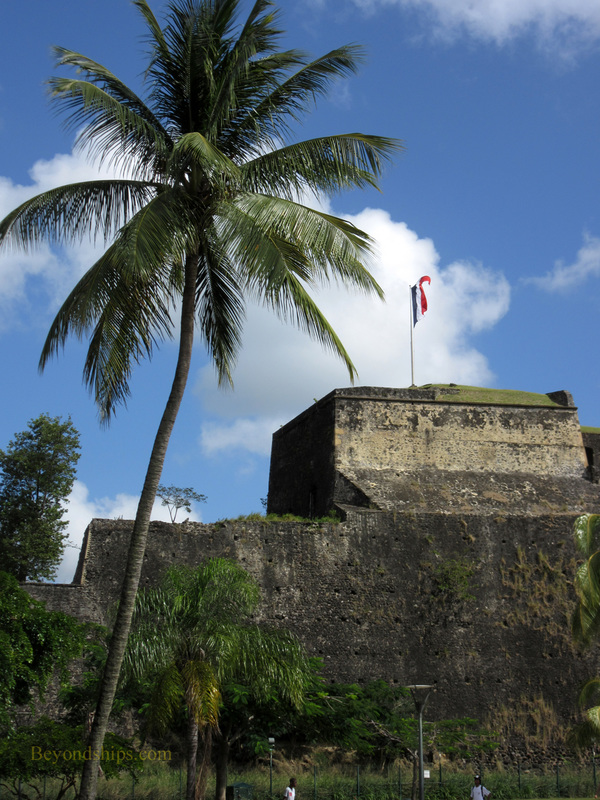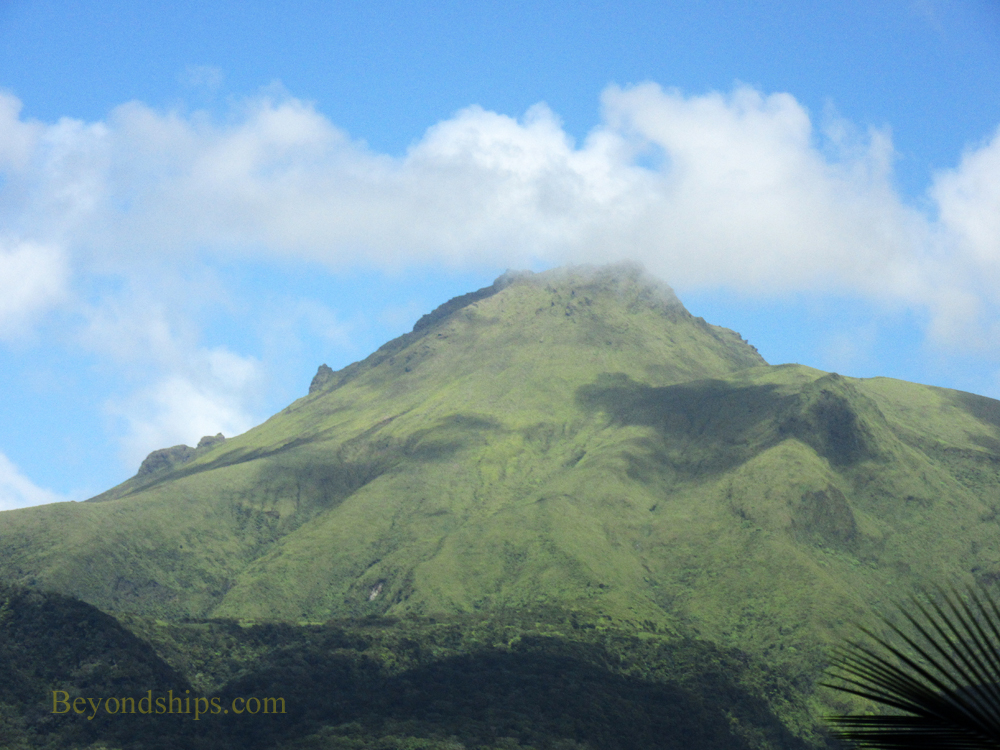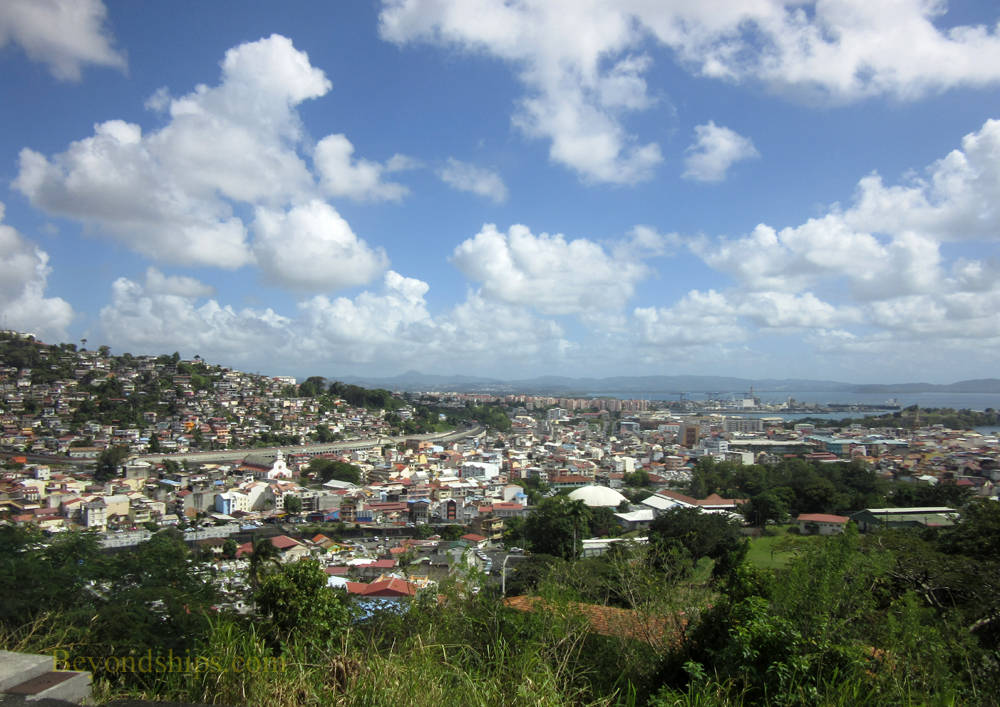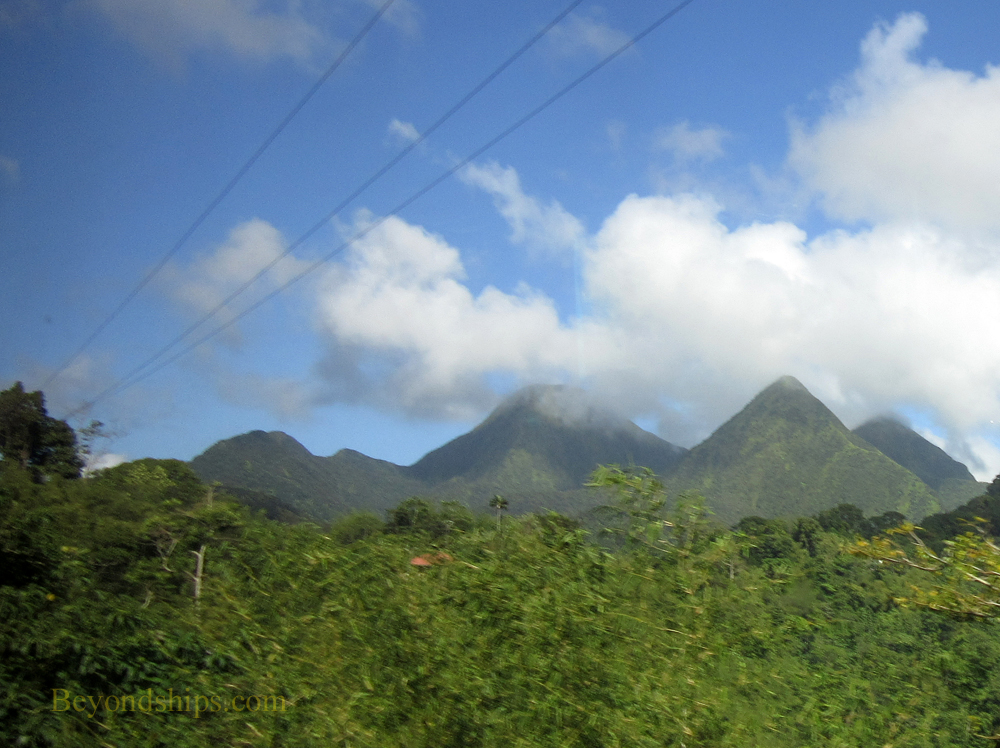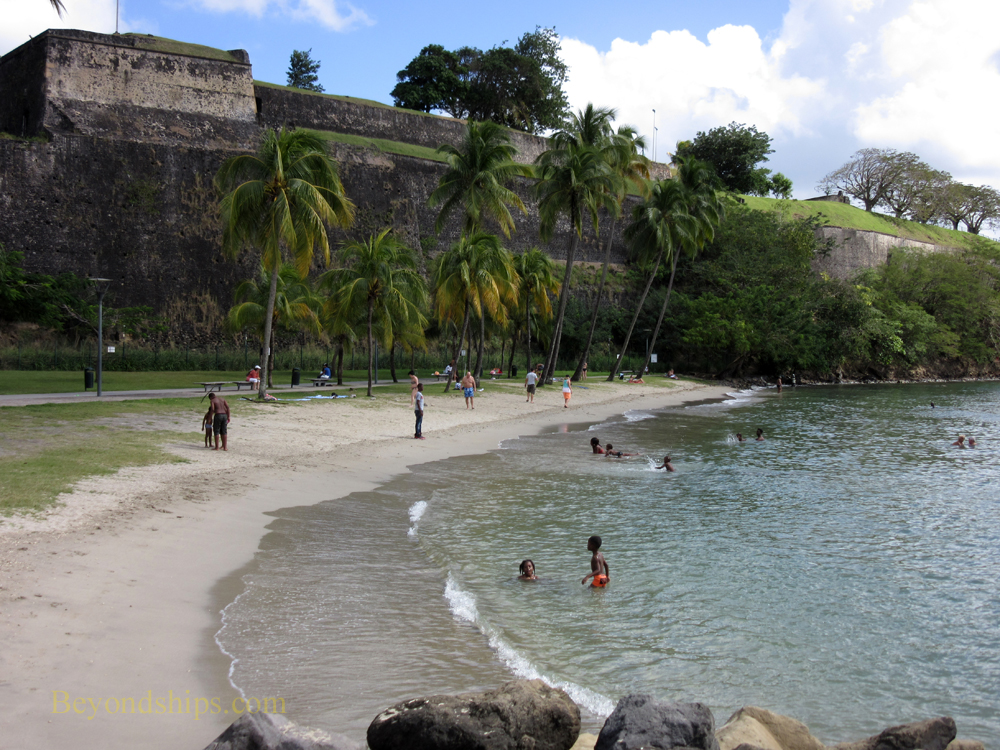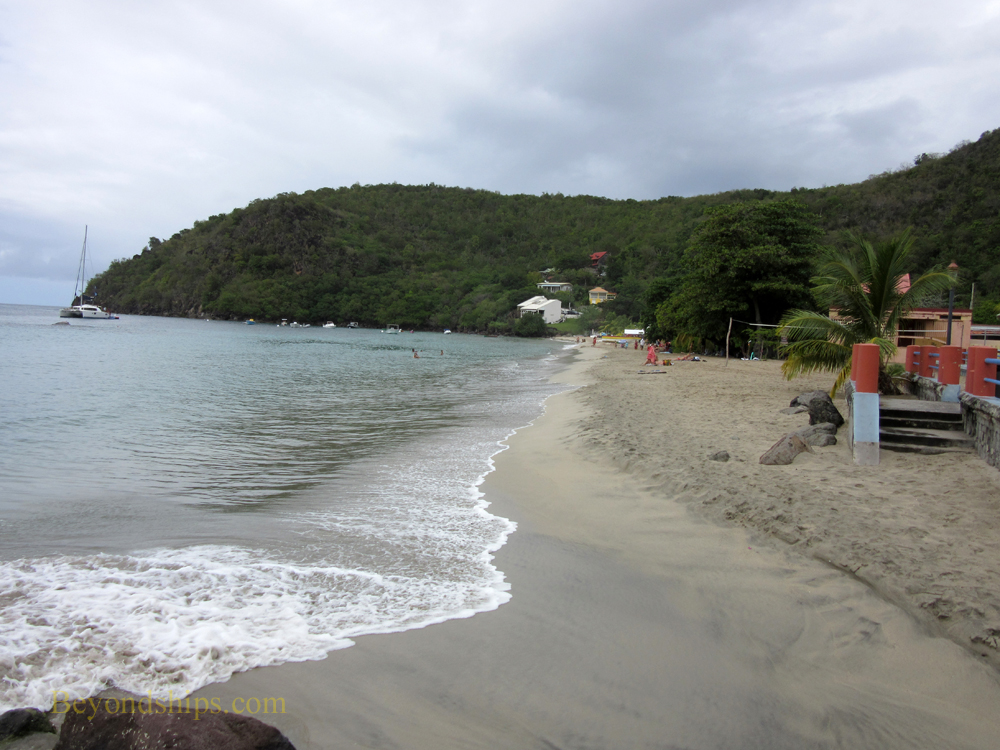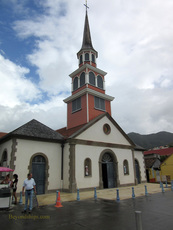 St. Henry's Churd Anse d'Arlet St. Henry's Churd Anse d'Arlet
Martinique is an increasingly popular cruise destination. Located in the French Antilles between Dominica and St. Lucia, this pretty volcanic island is marked by a range of rain-forest covered mountains. Its capital and main urban area, Fort de France, has a look that combines the Caribbean with the south of France.
An important thing to understand about Martinique is that it is French. Not only were its European settlers French in the colonial era but it remains part of France. Indeed, it became a Department of France in 1946 and a Department of France in 1974. Thus, from a legal perspective, Fort de France is just as much a part of France as Paris. Several things follow from this fact. French law applies. French is the official language and as part of the European Union, the Euro is the currency just as in Paris. French warships can often be seen docked in Fort de France. Elected representatives from Martinique sit in the French National Assembly. Financial support from mainland France strengthens the local economy, which can be seen in such things as the island's relatively good infrastructure. Just as importantly, French customs and attitudes prevail. Cars drive on the right side of the road just as in mainland France. Also, as in the rest of France, it is considered rude to enter a shop or to begin a conversation without saying good day. Similarly, people expect at least an attempt to speak a few words of French. As part of an effort to attract more English-speaking visitors, signs and tourist materials now often have an English translation. Still, unlike some other Caribbean islands where English has all but replaced the island's original European tongue, French remains the primary language. Martinique's culture also reflects the African heritage of the enslaved people who were brought to Martinique to farm its plantations. Thus, while it is often pointed out that the Empress Josephine, wife of Napoleon, was born in Martinique, her statue in Fort de France was decapitated in the 1990s because of her supposed support for the re-institution of slavery in Martinique in 1802. Also, many people speak Creole as well as French. The island has a population of about 400,000. Approximately, a quarter of the population lives in Fort de France, which looks like a small European city. Tourism has become Martinique's main industry. Agricultural exports, particularly bananas and pineapples, remain important. A remnant of the days when Martinique was an important producer of sugarcane, the island is also known for its fine rums. (See separate article). Agriculture is mainly in coastal areas and the valleys among the mountains. |
Above: The French tricolor flies over Fort St. Louis.
Below: Mt. Pelee is a semi-active volcano, which is also the island's highest mountain. Above: Martinque's capital, Fort de France, is a sprawling urban center that resembles modern cities in mainland France.
Below: The countryside is verdant and mountainous. |
A word about beaches
|
Above: Page de la Francasie.
Below: The beach at Anse de'Arlet in southwestern Martinique. |
Martinique has some beautiful beaches. Les Salines near Ste. Anne probably is the most famous.
Unfortunately for cruise visitors, most of the world class beaches are on the south side of the island, a considerable distance from where the cruise ships dock on the northern part of the island. In Fort de France, there is a beach within walking distance of the cruise terminals, Plage de la Francaise (Beach of the French), but is is tiny and used primarily by local children. However, close by the Pointe Simon Cruise Terminal is the pier for the ferries that run across the bay to Pointe du Butt and Trios Iilet. In this resort area, there are the popular beaches of Anse Mitan and Anse a l'Ane. The ferry ride takes about 20 minutes each way. |
|
|
|
Cruise destination travel guide - Martinique - Martinique Overview
